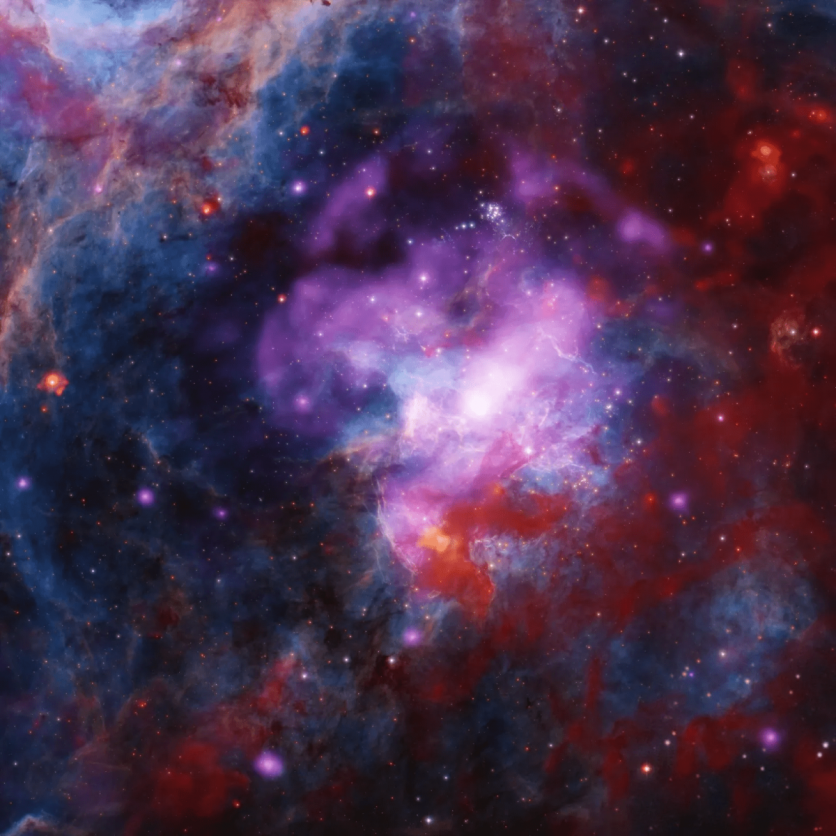NASA has kicked off the new year with a dazzling and festive image capturing the aftermath of not one but at least two exploded stars. The space agency has basically started 2024 with a double bang!
This vibrant celestial display is none other than the supernova remnant known as 30 Doradus B, or simply 30 Dor B, nestled within a larger expanse of space where stars have been forming continuously for the past 8 to 10 million years.

A Festival of Lights
Situated 160,000 light-years away in the Large Magellanic Cloud, a satellite galaxy of the Milky Way, 30 Dor B unveils a complex cosmic landscape featuring dark gas clouds, young stars, high-energy shocks, and superheated gas, according to NASA.
The captivating image is a composite of various types of light, combining X-ray data from NASA's Chandra X-ray Observatory (depicted in purple), optical data from the Blanco 4-meter telescope in Chile (presented in orange and cyan), and infrared data from NASA's Spitzer Space Telescope (illustrated in red).
Additionally, optical data from NASA's Hubble Space Telescope has been incorporated in black and white to emphasize sharp features within the image.
Read Also : NASA's Picture of the Day Features SpaceX Falcon Heavy Rocket Crossing in Front of Nearly Full Moon
A Captivating Revelation
Led by Wei-An Chen from the National Taiwan University in Taipei, the team of astronomers engaged in a thorough exploration of the vast data accumulated from over two million seconds of Chandra observing time dedicated to 30 Dor B and its environs.
Their scrutiny revealed a subtle yet expansive X-ray shell stretching around 130 light-years, surpassing the proximity of our nearest star, situated a mere 4 light-years away. This X-ray shell, as discerned by the researchers, is linked to particle winds emanating from a pulsar, resulting in the creation of a pulsar wind nebula.
The combined data from Hubble and various telescopes led to a captivating revelation: the intricate characteristics observed in 30 Dor B couldn't be ascribed to a solitary supernova explosion.
According to the researchers, the expansive and diffuse X-ray shell is too extensive to be solely attributed to this particular supernova event. The researchers postulate that a minimum of two supernova explosions occurred in 30 Dor B, with the larger X-ray shell originating from a separate supernova transpiring over 5,000 years ago.
The prospect of additional supernova incidents in the distant past is also under consideration.
This revelation provides astronomers with valuable insights into the life cycles of massive stars and the repercussions of their spectacular supernova explosions.
The intricate details of 30 Dor B open a window to the dynamic and ever-evolving nature of the cosmos, allowing scientists to piece together the celestial drama unfolding in the vastness of space.
The findings of the team were published in the Astronomical Journal.
Related Article : NASA's Hubble Space Telescope Captures 'Butterfly Nebula' In Stunning Motion | Fun Facts About This Beautiful Space Butterfly

ⓒ 2025 TECHTIMES.com All rights reserved. Do not reproduce without permission.




